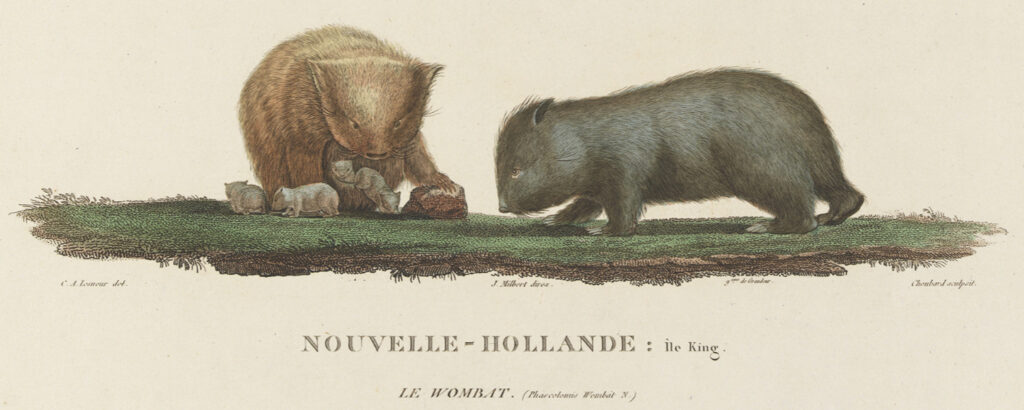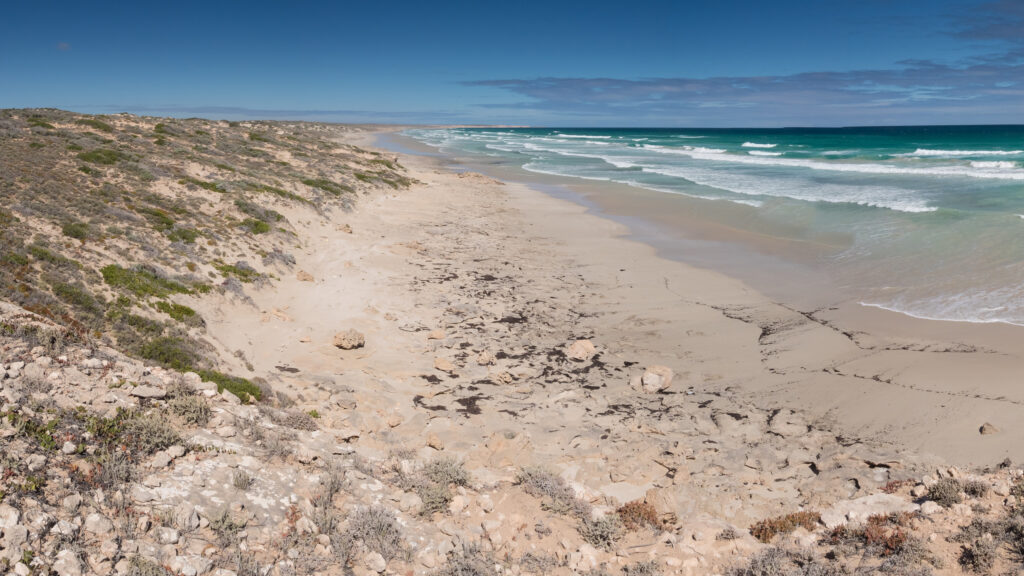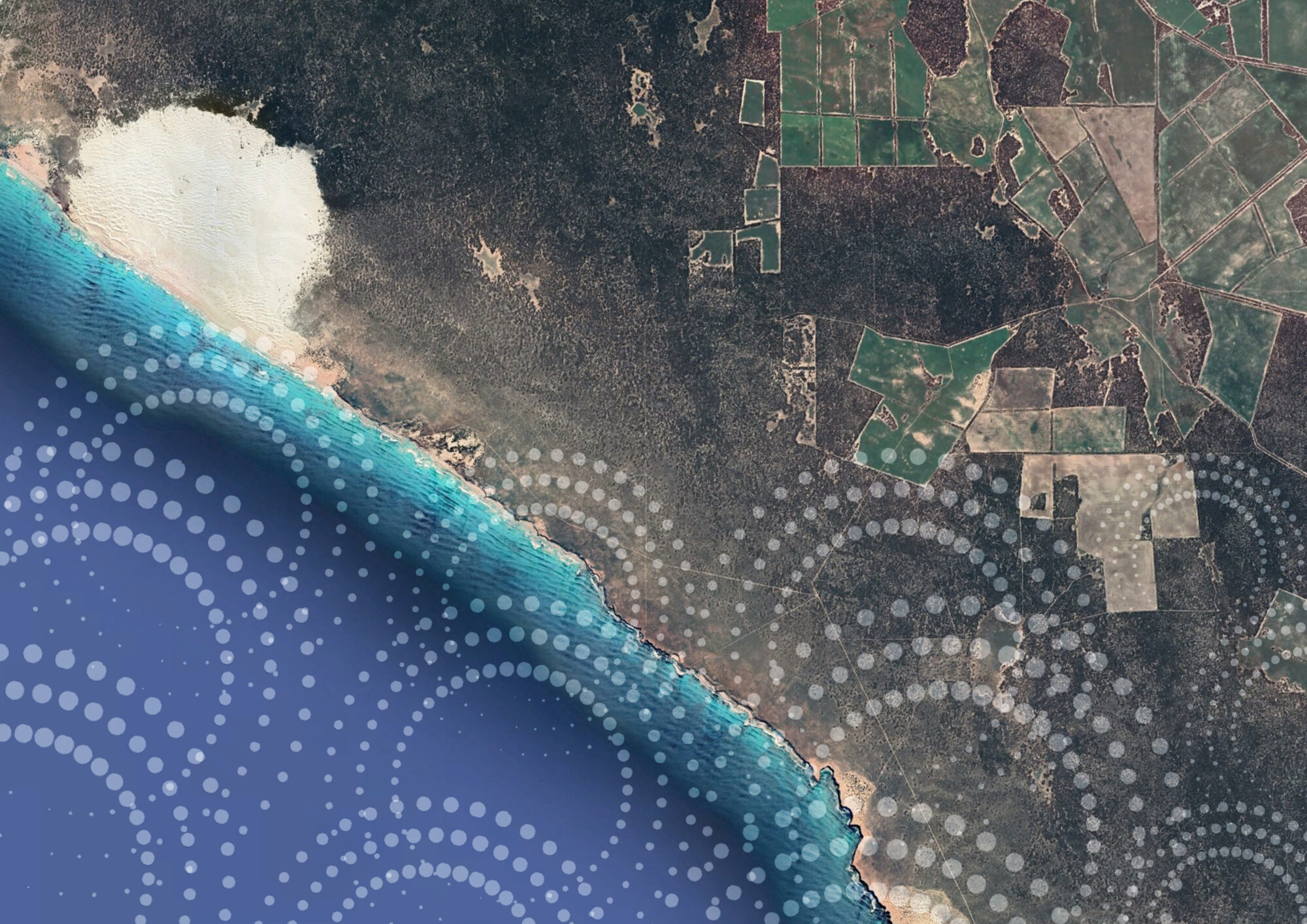The Yargaryilya hit Jeedara on the head several times and he became very angry as he travelled towards Head of the Bight. As he travelled, Jeedara met two wanchilya, dolphins, as told by the women, and two djulea, penguins, as told by the men.
Just west of Biddy Ngandan Wal is Wandilla Bay and wandilda is our name for porpoise, a relative of wanchilya the dolphin.

Wookatha is Wardu, Wombat Country, though Wengel is the Mirning name specific to the rare seacoast southern hairy-nosed wombat (Lasiorhinus latifrons), which is the smallest of the three species of wombat.
Wengel is unique to this part of Australia, living in small, isolated populations, and is listed as ‘near threatened’ on the IUCN Red List of Threatened Species (IUCN 2014). Lasiorhinus latifrons (Southern Hairy-nosed Wombat) (iucnredlist.org)
With colonisation came the European rabbits and their rapidly exploding populations. They competed for food and burrows and brought diseases, such as mange, which drastically affected wombat populations.
The last major survey on the Nullarbor Plain in Western Australia was in the 1980s and raised concerns of their extinction in the west, as they found almost no evidence of wombats being present. However, there has been a recent increase in numbers in South Australia and they are starting to repopulate in the west.
Wengel is the official State ‘faunal emblem’ animal of South Australia, where they are a protected species.


